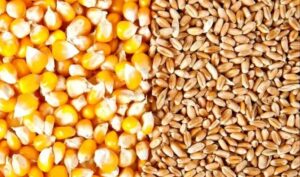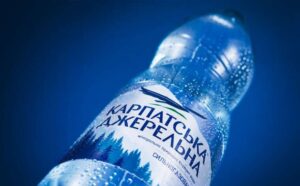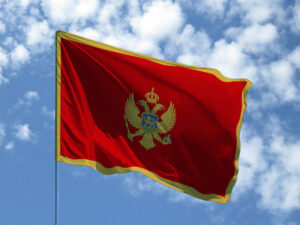
According to Serbian Economist, Naftna industrija Srbije (NIS) is considering the possible sale of a controlling stake (56.15%) to the Russian side of ADNOC from the United Arab Emirates.
According to the publication, there has been no official confirmation from either the Russian side or ADNOC. However, experts believe that the option of selling to an “Arab player” is the most likely and logical. Among other contenders mentioned is the Hungarian MOL Group.
The head of the Serbian parliament’s energy committee, Milun Babic, pointed out that a deal with an Arab investor is preferable to the risk of supply blockages due to sanctions, but he said that the best option would be to transfer management to the Russian side for 20 years. “Selling to the Arabs is a possible option… but it is not ideal,” he said.
Serbian President Aleksandar Vučić, in turn, confirmed that Russia is negotiating the sale of the NIS stake to three investors and that the Serbian side will not be able to exercise its right of first refusal.
If the deal goes through, experts see the following possible consequences for Serbia:
1) increased investment in the modernization of the oil industry, including possible expansion of production and logistics in the region;
2) increased geopolitical independence from Russian assets and reduced risk of sanctions;
3) strengthening of the country’s role as an energy hub in the Balkans.
According to expert Branimir Jovanovic, the new investor could export oil from Serbia and the region or invest in the modernization of the refinery in Pančevo.
Naftna industrija Srbije (NIS) is Serbia’s largest oil and gas company, controlled by Russia’s Gazprom Neft. The company’s authorized capital and strategic importance make it a key element of the country’s energy sector. The transfer of shares will affect Serbia’s future management, investments, and international relations.
Source: https://t.me/relocationrs/1793

As of November 21, farmers harvested 50.93 million tons of grains and legumes from 10.23 million hectares, which is 88% of the area sown with these crops, the Ministry of Economy, Environment, and Agriculture reported on its website on Friday.
Last year, 53.4 million tons of grain and 19.5 million tons of oilseeds were harvested on the same date, meaning that this year’s figures are 4.6% and 12.6% lower, respectively, mainly due to the later start of the corn harvest.
As noted by the Ministry of Economy, 20.84 million tons of corn have been harvested from 3.12 million hectares, while last year at approximately the same date, 23.6 million tons were harvested from 3.7 million hectares.
As for wheat, its harvest is slightly higher than last year’s – 22.96 million tons from 5.05 million hectares compared to 22.40 million tons from 4.9 million hectares, while barley is slightly lower – 5.42 million tons from 1.36 million hectares compared to 5.6 million tons from 1.41 million hectares a year ago.
This year’s pea harvest is significantly higher – 672,500 tons from 275,100 hectares compared to 469,000 tons from 212,300 hectares last year, while buckwheat and millet are still significantly lower – 82,400 tons versus 131,700 tons and 62,100 tons versus 161,300 tons, respectively.
The harvest of other cereals and legumes this year reached 896.5 thousand tons from 327.6 thousand hectares as of November 21, compared to 1 million tons last year.
It is noted that among the leaders are Chernihiv region – 4.57 million tons, Khmelnytskyi – 4.89 million tons, Vinnytsia – 4.62 million tons, Odesa – 4.06 million tons.
As for oilseeds, their harvest as of November 21 is 17.05 million tons. In total, 92% of the sown area has been harvested for sunflowers and 96% for soybeans. The rapeseed harvest has been completed, and it turned out to be only slightly less than last year’s – 3.31 million tons compared to 3.5 million tons from almost the same area – about 1.3 million hectares.
However, there is a significant lag in the harvesting of soybeans and sunflowers, which is still ongoing: 4.72 million tons of soybeans have been harvested from 1.99 million hectares, compared to 6 million tons from 2.6 million hectares on the same date last year, while sunflower seeds – 8.92 million tons from 4.79 million hectares compared to 10.1 million tons from 4.9 million hectares.
In addition, sugar beet harvesting is also lagging behind: 94% of the production area has been harvested, yielding 9.96 million tons from 186,000 hectares, compared to 12 million tons from 251,200 hectares a year ago.
In its October inflation report, the National Bank of Ukraine increased its estimate of the grain and legume harvest in 2025 to 61.5 million tons from 57.9 million tons in the July report, while lowering its estimate of the oilseed harvest to 19.3 million tons from 21.0 million tons.
The NBU recalled that last year, the grain harvest in Ukraine fell to 56.2 million tons from 59.8 million tons in 2023, and oilseeds – from 21.7 million tons to 20 million tons.

In September 2025, Express Insurance settled insurance claims under comprehensive insurance policies in Austria, Belgium, Bulgaria, Great Britain, Spain, Italy, Moldova, Germany, Poland, Romania, Turkey, Hungary, France, Croatia, the Czech Republic, and Switzerland for a total amount of UAH 4.7 million, according to the insurer’s website.
In particular, in Turkey, sudden braking on the highway led to losses of more than UAH 740,000, compensation for a careless maneuver in France amounted to UAH 528,000, and the sudden appearance of a wild boar on an evening highway in Spain amounted to more than UAH 351,000.
A payment of UAH 284,000 was made for damage to a car while parking in Croatia, and UAH 119,000 for an unnoticed obstacle in Austria when driving into an underground bumper.
Express Insurance LLC was founded in 2008 with the participation of Ukravto Group.
The company is represented in more than 60 points of sale throughout Ukraine and is actively expanding its network of partner service stations. Today, the number of service station partners exceeds 100.

At its meeting on Thursday, the Antimonopoly Committee of Ukraine (AMCU) granted Polish company Grupa Maspex sp. z o.o. permission to acquire joint control over two companies, Karpatski Mineralni Vody, together with a Ukrainian citizen through a Cypriot company controlled by him, the agency’s press service reported.
“Permission has been granted to the companies GRUPA MASPEX SP. Z O.O. (Wadowice, Poland), DYNALUM FINANCE LTD. (Larnaca, Cyprus) and a natural person who is a citizen of Ukraine (information access is restricted) for concerted actions in the form of fulfilling the non-competition and non-solicitation obligations set forth in clause 11 of the draft shareholder agreement,” the statement said.
According to data from the Opendatabot system, Dinalum Finance Ltd. is one of the founders of Karpatski Mineralni Vody Trading House LLC, whose ultimate beneficial owner is Serhiy Ustenko (99.9%). Ustenko also owns Karpatski Mineralni Vody LLC, registered in the Lviv region.
Grupa Maspex sp. z o.o is a food concern (Vadovice, Poland). It is one of the largest food producers in Central and Eastern Europe. It owns the trademarks Tymbark (juice), Lubella (pasta), Łowicz (jams, sauces, etc.), Żubrówka, Soplica, Absolwent, and Bols (alcohol), etc.
According to the Karpatskie Wody Mineralne website, the company started operating in the mineral water market in 1996 with the first bottling of Karpatskie Dzerelna natural mineral table water. In June 2002, it was reorganized into the Carpathian Mineral Waters plant for the production of mineral water and non-alcoholic beverages. At the same time, the company began producing sweet carbonated beverages under the Fruktova
Dzherelna and Sokovinka brands, and in 2016, the Dragon energy drink.
In 2025, Karpatski Mineralni Vody began construction of a plant in the Zolochiv district of the Lviv region. The European Bank for Reconstruction and Development (EBRD) provided Karpatski Mineralni Vody with a EUR11 million loan to finance this construction. The total cost of the project is EUR24 million.

According to the Serbian Economist, Montenegro will soon tighten the visa regime for Russian citizens, bringing it in line with the rules of the European Union. This was announced by the Prime Minister of the country Milojko Spajic.
According to the head of the government, Podgorica intends to fully harmonize visa policy with the EU, which means the abolition of the current order allowing Russians to stay in Montenegro up to 30 days without a visa. Spajic emphasized that the measures will be introduced “very soon” and are part of the course to accelerate European integration and achieve EU membership by 2028.
Russian citizens can now freely enter the country for short periods of time without a visa, which has led to a significant increase in the number of tourists and re-locations from Russia in recent years. Once the regime is tightened, entry will require a visa at consular offices, similar to Schengen rules.
How many Russians now reside in Montenegro
According to official data from the Ministry of Internal Affairs of Montenegro, at the beginning of 2024-2025 in the country officially registered about 20 thousand citizens of Russia with a temporary or permanent residence permit. This makes Russians one of the most numerous foreign communities in the small 600-thousand-strong state.
In addition, according to the calculations of tourism and migration services, several thousand more Russians are in the country without long-term statuses – on tourist stay, on business grounds or in the process of registration of residence permits.
Prime Minister also recalled that Montenegro had previously tightened visa rules for citizens of Armenia, Uzbekistan, Kuwait and Egypt within the framework of adapting visa policy to EU standards. Podgorica fully follows the general foreign and defense policy of the European Union, including sanctions and visa restrictions against Russia.
Observers attribute the upcoming changes to pressure from Brussels following the tightening of the EU visa regime for Russians, as well as Montenegro’s desire to reaffirm its commitment to the European course against the backdrop of membership negotiations.
https://t.me/relocationrs/1792

The Sukha Balka mine (Kryvyi Rih, Dnipropetrovsk region), part of Alexander Yaroslavsky’s DCH group, is commissioning a new iron ore deposit block, Golovnyi, at the Yuvileina mine.
According to a report in the DCH Steel corporate newspaper on Thursday, preparations for the new production capacity at the mine have been completed.
It is specified that in early November, a specialized commission consisting of leading specialists of the enterprise and representatives of the State Labor Service of Ukraine signed an act on the commissioning of mining block 13-17. It is located in the Golovnoy deposit at a depth of 1,420 meters, sub-level 3A.
The block’s projected reserves amount to 221,300 tons of ore with an iron content of 60.75%.
“This is a large block that we have been preparing for production for almost a year, and its reserves will be enough for six months of stable operation of the enterprise,” said Mykola Puntus, chief engineer of the Yuvileina mine.
It is also reported that at the Tsentralna mine, the drainage pond at the -1260 m and -1340 m levels has been repaired. The diameter of the new pipeline between these underground levels is 325 mm. The Tsentralna mine is part of the Yuvileina mine. A drainage pond is a hydraulic engineering structure designed to collect water and is a critical part of the mine drainage system.
The Sukha Balka mine is one of the leading enterprises in the mining industry in Ukraine. It extracts iron ore using underground mining methods. The mine includes the Yuvileina and Frunze mines.
The DCH Group acquired the mine from the Evraz Group in May 2017.
DCH, Mine, ORE, SUKHA BALKA, Yuvileina